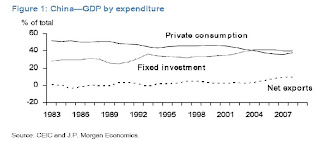
We consider TLKM as our sector pick based on following factors. (1) Large cap, Telkom capex US$1.8-2bn in 2009. Meantime, competitors are cutting down on capex, reducing their ability to compete and to expand coverage. (2) Highest dividend payout and yield (3) high free float (4) Stronger net adds in Jan-Feb 09 (5) Potential benefits from a revamp in spectrum fees (6) Easing competition
 In FY09, we expect it to have a better subscriber growth. TSEL net add is 4mn which we believe is double than ISAT and EXCL given that in 4Q08, TSEL net adds was 4.7mn while it was only around 1mn for other two operator. After 2 years of mobile price war and negative news flow, has already seen marked improvement and is likely to continue. After playing defensive, Telkomsel is now turning the table and playing the aggressor. Mobile tariffs have stopped falling for several months now.
In FY09, we expect it to have a better subscriber growth. TSEL net add is 4mn which we believe is double than ISAT and EXCL given that in 4Q08, TSEL net adds was 4.7mn while it was only around 1mn for other two operator. After 2 years of mobile price war and negative news flow, has already seen marked improvement and is likely to continue. After playing defensive, Telkomsel is now turning the table and playing the aggressor. Mobile tariffs have stopped falling for several months now. Our Points:
We are starting positive on Telecommunication Sector, we like TLKM which is slightly below its regional peers, with higher Capex and dividend payout rather than ISAT .
Telkom has strong balance sheet + cash flow to sustain its capex. This will allows Telkom to tap into new frontier and to strengthen its position in areas of presence through better network coverage, quality, and capacity.
We BUY as competition pressure eases, if tariff and Arpu stabilize as expected we believe TLKM will have 22% potential upside idr 8400, 13.0 x PER’09 followed regional peer average.

[Personal Opinion ]
=====================================================================================
DISCLAIMER: This report is issued by [BRIGHT INFO]. Although the contents of this document may represent the opinion of [BRIGHT INFO]. We cannot guarantee its accuracy and completeness.




















